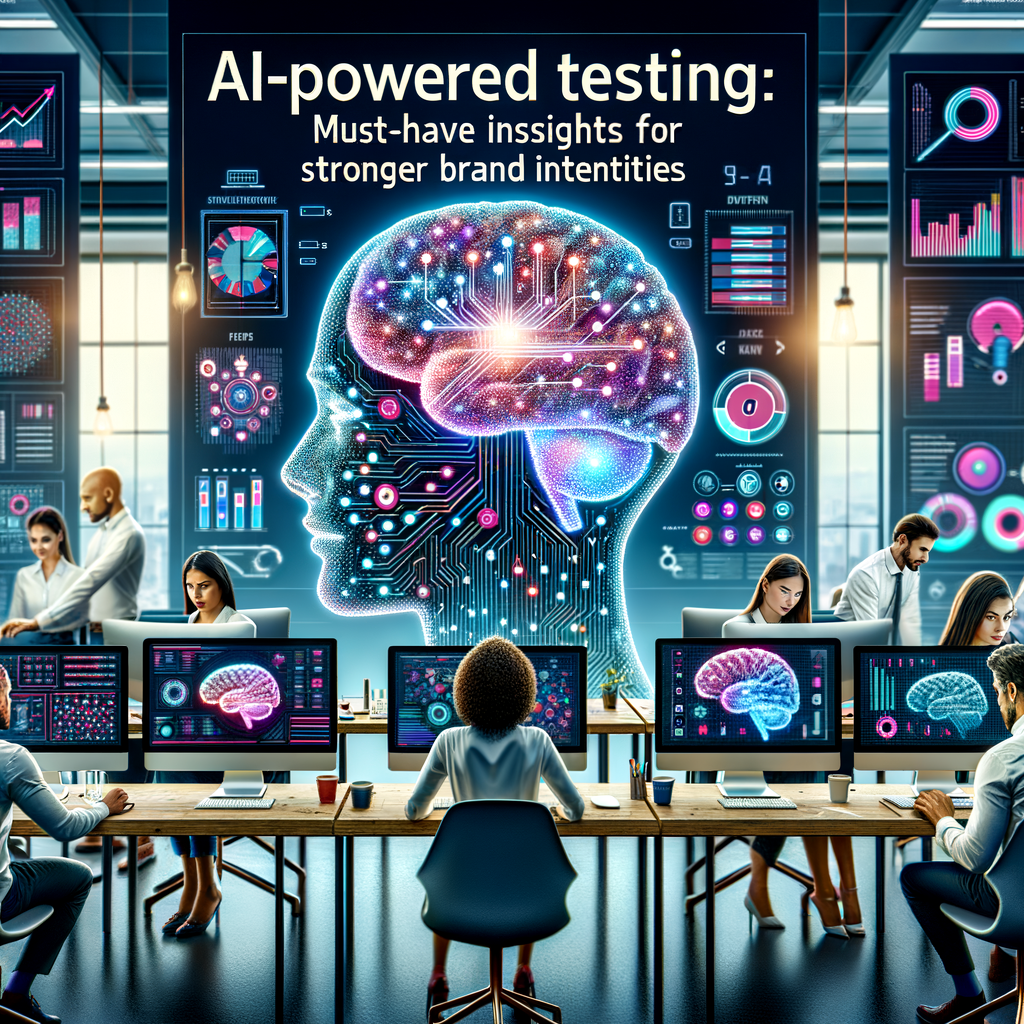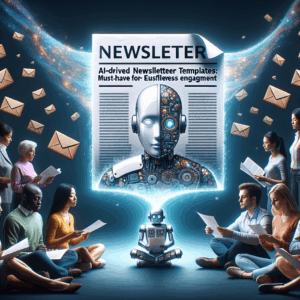
AI-Powered Testing: Must-Have Insights For Stronger Brand Identities
- What is AI-Powered Testing?
- How AI-Powered Testing Enhances Brand Identity
- Personalized Customer Experiences
- Data-Driven Insights
- Increased Agility
- Key Elements of AI-Powered Testing
- User Behavior Analysis
- Automated Testing Processes
- Feedback Loop
- Real-World Applications of AI-Powered Testing
- Netflix
- Amazon
- Spotify
- Challenges of Implementing AI-Powered Testing
- Data Privacy Concerns
- Integration with Existing Systems
- Continuous Learning Requirement
- Best Practices for Effective AI-Powered Testing
- Set Clear Objectives
- Prioritize User Experience
- Monitor and Adjust
- Future Trends in AI-Powered Testing
- Natural Language Processing (NLP)
- Predictive Analytics
- Enhanced Personalization
- Conclusion
- FAQs
- References
Understanding AI-Powered Testing
In today’s digital landscape, brands strive for a unique identity that resonates with their target audience. Standing out isn’t just about clever slogans or eye-catching logos. One emerging tool that brands are using is AI-powered testing. This technology is game-changing. It enhances decision-making processes and strengthens brand identities.
AI-powered testing involves using machine learning algorithms to analyze data, predict outcomes, and offer insights. As a result, brands can understand their customers better. Knowing what works and what doesn’t leads to effective marketing strategies. In this article, we will explore insights that businesses can leverage to create stronger brand identities.
What is AI-Powered Testing?
AI-powered testing refers to the application of AI technologies to evaluate marketing strategies, product designs, or user experiences. By automating data collection and analysis, brands save time and resources. AI algorithms can sift through massive amounts of data quickly. They provide actionable insights that help brands make informed decisions.
Unlike traditional testing methods, which often rely on linear approaches, AI tests adapt and evolve. They learn from each iteration, continuously improving their outcomes. This iterative process streamlines testing efforts, ultimately enhancing brand identity and customer engagement.
How AI-Powered Testing Enhances Brand Identity
Brand identity is how a brand presents itself to the world. It’s the combination of visual elements, messaging, and customer perception. AI-powered testing bolsters brand identity in several ways.
Personalized Customer Experiences
AI allows brands to tailor experiences based on customer behavior. The technology analyzes data and segments customers into various categories. Marketers can then target specific groups with personalized content. For instance, an online retailer may use AI to generate product recommendations based on past purchases.
Through tools like A/B testing and multivariate testing, brands can experiment with different messages or visuals. These tests help pinpoint what resonates best with each customer segment. Over time, this leads to a more authentic brand relationship.
Data-Driven Insights
Brands often struggle with data overload. AI-powered testing cuts through the noise by focusing on relevant metrics. These metrics guide brands in understanding their audience better.
By adopting AI, businesses can identify patterns in customer interactions. This analysis helps in understanding which factors drive customer loyalty. It informs future branding strategies, ensuring that they align with audience expectations.
Increased Agility
In a fast-paced market, adapting to changes quickly is crucial. AI-powered testing equips brands with the ability to pivot strategies based on real-time data. Instead of lengthy review processes, brands can implement changes almost instantaneously.
This adaptability fosters a dynamic brand identity. The ability to respond swiftly not only meets customer needs but also sets a brand apart in competitive markets.
Key Elements of AI-Powered Testing
To maximize the benefits of AI-powered testing, brands need to understand its key components.
User Behavior Analysis
AI excels at analyzing user behavior. Brands can track actions such as clicks, time spent on pages, and purchase history. Understanding this behavior is critical for crafting relevant marketing messages.
For example, if a significant number of users drop off at a specific page, that indicates a problem. Brands can apply AI to identify issues and test solutions to improve user experience.
Automated Testing Processes
Automation is a cornerstone of AI-powered testing. Traditional methods require manual input, which can be time-consuming. AI refines this process by automating tests and gathering results in real time.
Automation allows brands to conduct multiple tests simultaneously. This capability speeds up the testing phases and provides quicker insights. Consequently, brands can keep up with customer expectations and market trends.
Feedback Loop
An effective feedback loop is critical. AI-powered testing continuously gathers feedback from various touchpoints. This feedback informs future decisions, creating a cycle of improvement.
For instance, brands can analyze customer surveys, social media comments, and website interactions. By linking these insights back to the AI system, brands create a responsive testing environment. This continual evolution is essential for a robust brand identity.
Real-World Applications of AI-Powered Testing
AI-powered testing is not just theoretical; many brands utilize it successfully. Here are some real-world applications that showcase its effectiveness.
Netflix
Netflix relies heavily on AI to improve user experiences. The platform analyzes viewing habits to recommend shows and movies. Through A/B testing, Netflix experiments with thumbnail designs and descriptions. By understanding what captures audience attention, they enhance customer engagement and overall satisfaction.
Amazon
Amazon employs AI to generate personalized recommendations for users based on past purchases. The platform tests various layouts to determine which arrangement boosts sales. With this constant optimization, Amazon fortifies its brand identity as a customer-centric leader in e-commerce.
Spotify
Spotify utilizes AI to curate personalized playlists for users. The AI analyzes listening patterns and suggests songs that align with user preferences. This personalization differentiates Spotify from competitors and solidifies its identity as a music lover’s go-to platform.
Challenges of Implementing AI-Powered Testing
Despite its advantages, incorporating AI-powered testing into a brand strategy is not without challenges. Recognizing these challenges is crucial for effective implementation.
Data Privacy Concerns
In an age where data privacy is paramount, brands must tread carefully. Collecting and utilizing customer data for testing can raise ethical questions. Brands need transparent policies to assure users about data security and privacy.
Integration with Existing Systems
Many businesses already have established systems in place. Integrating AI tools with these legacy systems can be complex. Brands must allocate resources and time for this integration to succeed. A well-executed integration process can lead to a seamless experience.
Continuous Learning Requirement
AI technologies require ongoing training and learning. As the algorithms process new data, they need regular updates to remain effective. This responsibility falls on the brand’s data team to ensure AI tools adapt to changing market conditions.
Best Practices for Effective AI-Powered Testing
To maximize the benefits of AI-powered testing, brands should follow these best practices:
Set Clear Objectives
Before implementing any testing, brands should define their objectives. Knowing what to achieve—whether increasing clicks or improving conversion rates—provides a roadmap. Clear objectives guide the testing process and inform analysis.
Prioritize User Experience
Focusing on the user experience is paramount. Brands should integrate customer feedback into the testing process. This approach helps tailor efforts to meet actual needs, preserving brand integrity and fostering loyalty.
Monitor and Adjust
AI-powered testing is not a one-and-done task. Brands should continuously monitor test outcomes and adjust strategies accordingly. Regular reviews of data insights will ensure that the brand remains competitive and aligned with target audiences.
Future Trends in AI-Powered Testing
As AI technology continues to evolve, emerging trends will shape the future of AI-powered testing.
Natural Language Processing (NLP)
NLP will play a pivotal role in understanding customer sentiment. Brands will leverage this technology to assess customer reviews and feedback. This analysis will enrich AI-powered insights, leading to more informed branding strategies.
Predictive Analytics
Predictive analytics will further revolutionize AI’s capabilities. Brands can anticipate customer behavior more accurately, tailoring campaigns in advance. This foresight allows brands to be proactive rather than reactive, cultivating stronger identities.
Enhanced Personalization
The next wave of AI-powered testing will dive deeper into personalization. Brands can create hyper-targeted segments and deliver tailored messages. This level of personalization strengthens emotional connections with customers, reinforcing brand loyalty.
Conclusion
AI-powered testing is more than just a tool. It reshapes how brands connect with their customers and build their identities. By delivering personalized experiences, harnessing data-driven insights, and enhancing agility, businesses can navigate the complexities of today’s marketplace.
Implementing AI in testing processes comes with challenges, but the potential benefits far outweigh the drawbacks. By adhering to best practices, brands can effectively harness AI’s power. As technology continues to evolve, staying ahead of trends will foster even stronger brand identities. This journey may be complex, but the rewards are well worth the effort.
FAQs
1. What is AI-powered testing?
AI-powered testing refers to using machine learning algorithms to analyze data, predict outcomes, and offer insights for decision-making.
2. How does AI improve brand identity?
AI enhances brand identity by personalizing customer experiences, providing data-driven insights, and increasing agility in marketing strategies.
3. What are some real-world examples of AI-powered testing?
Brands like Netflix, Amazon, and Spotify successfully utilize AI-powered testing to improve user experiences and boost engagement.
4. What challenges come with implementing AI-powered testing?
Challenges include data privacy concerns, integration with existing systems, and the need for continuous AI learning and updates.
5. How can brands ensure data privacy while using AI?
Brands should establish transparent policies, communicate with customers about data usage, and adhere to legal regulations regarding data protection.
6. What best practices should brands follow for effective AI-powered testing?
Brands should set clear objectives, prioritize user experience, and continuously monitor and adjust strategies based on test outcomes.
7. What is the role of natural language processing in AI testing?
NLP helps brands analyze customer sentiment from reviews and feedback, enriching insights and guiding branding strategies.
8. How can predictive analytics benefit AI-powered testing?
Predictive analytics allows brands to anticipate customer behavior, enabling them to tailor campaigns proactively rather than reactively.
9. What trends should brands look out for in AI-powered testing?
Emerging trends include advancements in NLP, predictive analytics, and enhanced personalization techniques.
10. Is AI-powered testing suitable for all brands?
While the benefits are considerable, brands must assess their resources and capabilities to implement AI-powered testing effectively.
References
– Netflix – How AI Personalizes Your Experience
– Amazon AI and Personalization
– Spotify – The Role of AI in Music Discovery
– The Future of Marketing: AI and Testing
– Data Privacy and AI: Balancing Benefits and Concerns

